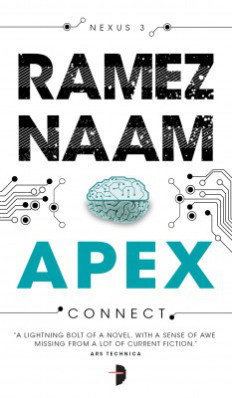Rob Wolf's Blog, page 16
June 11, 2016
Art in Motion
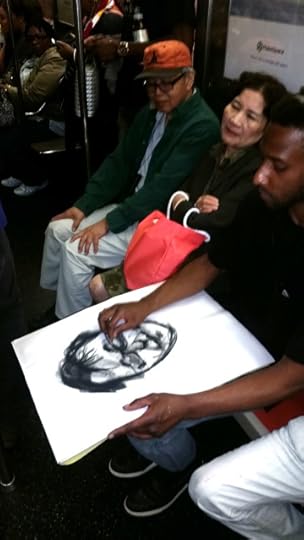
So this guy sits down and just starts drawing the guy opposite him. Takes him about 90 seconds to produce a picture. Enough time to create a pleasing likeness and elicit a donation from the subject, who takes the rendering with a smile.


June 8, 2016
Girl Walks Out of a Bar
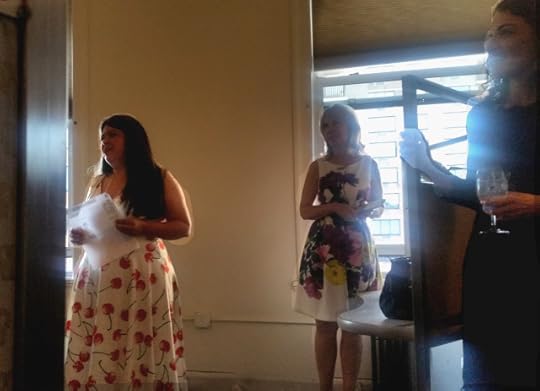

 Lisa F. Smith, my colleague and friend (right), had a righteously fun book party to celebrate the publication of her memoir Girl Walks Out of a Bar, which she wrote in our writing workshop led by Jennifer Belle. The party was held in The Writers Room, of which Donna Brodie (center) is executive director.
Lisa F. Smith, my colleague and friend (right), had a righteously fun book party to celebrate the publication of her memoir Girl Walks Out of a Bar, which she wrote in our writing workshop led by Jennifer Belle. The party was held in The Writers Room, of which Donna Brodie (center) is executive director.
Jennifer, left, gave an amazing toast in which she praised Lisa for her beautiful, candid writing about recovery from addiction.
Lisa’s personal story is inspiring–and humorously told, and I recommend everyone interested in a) lawyer who work in a high-pressure environments b) people who learn to succeed despite life’s challenges or c) having a good laugh buy Lisa’s book!


June 5, 2016
The Eternal Optimist: An Interview with Philip K. Dick Award Winner Ramez Naam
My new podcast for New Books in Science Fiction is an interview with Ramez Naam. Here’s my write-up that goes with the interview:
In the fictional battles between humans and machines, the divide between good and bad is usually clear. Humans, despite their foibles (greed, impulsiveness, and lust for revenge, to name just a few), tend to find redemption, proving mankind’s basic goodness through love, friendship and loyalty.
Machines, on the other hand, despite their superior physical and mental capacities, usually prove themselves to be (largely through the absence of the aforesaid capacity for love) to be dangerous and unworthy of the empires they seek to rule. But what if the humans and machines were combined – not merely cyborg-like in a jigsaw mix of man and robot but more elegantly, through a perfect blending of mind and matter? Ramez Naam does just that in his Nexus trilogy by wedding a human being’s soul – her memories, feelings and intellect – to the most powerful computer ever built.
In Apex (Angry Robot, 2015), the trilogy’s third installment and winner of this year’s Philip K. Dick Award, things go awry. Su-Yong Shu, the brilliant Chinese scientist whose consciousness has been folded into a massive quantum computer deep under Shanghai, isn’t feeling so hot. In fact, she’s gone insane. It may seem, at first, as if Naam’s message is the same – that any artificial intelligence, when it gets smart enough (and even when it’s the result of a machine-human blend) craves power and will lead to mankind’s destruction. But Naam’s message is more complex: while the original computerized version of Su-Yong Shu goes on a destructive rampage, a copy of her consciousness in India finds its way back to sanity.
And through the journeys of these identical twins, we realize that Su-Yong Shu is neither human nor machine. She is something new, a powerful and mysterious being who has all the best and worst qualities of both man and machine – seemingly infinite capacities of intellect, strength, fear, paranoia and love. In his New Books in Science Fiction interview, Naam discusses the pluses and minuses of human enhancement, why he’s remained steadfastly optimistic about transformative technology since the 2005 publication of his non-fiction book More Than Human: Embracing the Promise of Biological Enhancement, and the extensive outlines he develops before sitting down to write. This is the second time Naam has appeared on the podcast. Dan Nexon interviewed him in 2013 about the first book in the trilogy, Nexus.
From the Interview:
“I have contact lenses in. I have a smart phone. I have a Fitbit. My fiance is on birth control. We have already upgraded ourselves quite a lot. My view in reality is that generally when you give someone the option of technology that improves their life in some way, and it’s safe enough and it’s cheap enough and enough people have done it already … people are just going to do it because people want these things. But everything is a little bit of a double-edged sword. No technology ever comes with zero downsides. So my phone means – the digital world means – that hackers can steal my identity or steal from my accounts, or it lets child porn go wild, or the NSA can spy on all of us far more easily.” –Ramez Naam


May 31, 2016
Reintegration and Transformation: A Trip to the Muscogee Nation

Work last week brought me to the Muscogee (Creek) Nation, where I was lucky enough to spend three and a half days learning about a program that helps people make one of the hardest and yet most important transitions of their lives.
I (and my colleagues) were inspired by everyone we met: from the staff of the Muscogee (Creek) Reintegration Program and their clients, to those who work for agencies that partner with them and the Muscogee officials who fund them.
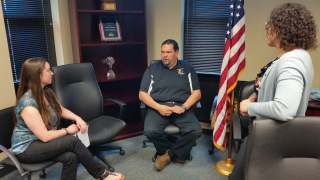
Leah, left, Tony and Adelle.
We were there to make a video for the Tribal Justice Exchange and its website Tribal Access to Justice Innovation about how the Reintegration Program helps tribal citizens returning from incarceration build new lives.
In a reflection of Muscogee values and culture–which emphasizes restoration and community healing–the program helps ex-prisoners find housing (and provides up to four months rent), find jobs, re-build relationships with families, and make fundamental changes in their lives.

Juan Carlos outside John H. Lilley Correctional
Center in Boley, Oklahoma.
Over the course of 11 years, the program has earned the support of the community, making a persuasive case that everyone benefits when an ex-prisoner is supported rather than shunned. Reentry programs not only lower recidivism but strengthen communities, helping formerly absent parents become productive caregivers and transforming inmates who cost the state thousands to house and feed into law-abiding taxpayers.
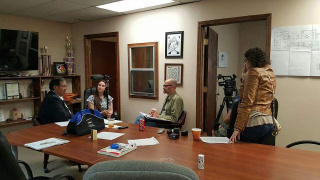
We interview Dr. Wayne Johnson,
former director of Education and Training for the
Muscogee Nation.
Not only was I impressed by the dedication of the staff, led by Program Director Tony Fish, but I was impressed by the commitment of the four former inmates we met, all of whom expressed through words and actions a strong desire to reintegrate with their communities and families.
Fish said one of the qualities necessary for the success of the Reintegration Program’s clients is resilience (a characteristics that also explains the survival of Native Americans to this day, Fish pointed out.)
I saw that resilience in Tony’s staff, who showed incredible commitment to their clients, and in the clients themselves. One remarkable woman, Allison, had suffered trauma and addiction but had transformed herself in prison, where she built bridges back to her family, found purpose through religion, and took classes to learn new skills. When she was released, she gathered recommendations from her teachers and others who had seen her grow and now has a job as an advocate for victims of domestic violence.
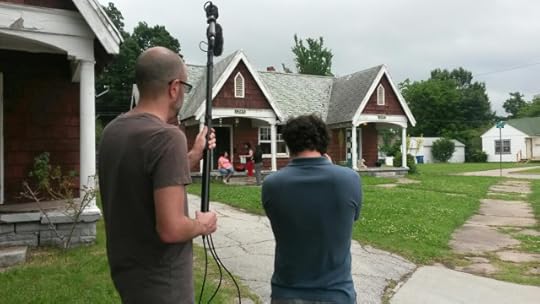
Juan Carlos films staff from the Reintegration Program speaking with a client who had just moved into a new home. (I’m holding the boom).
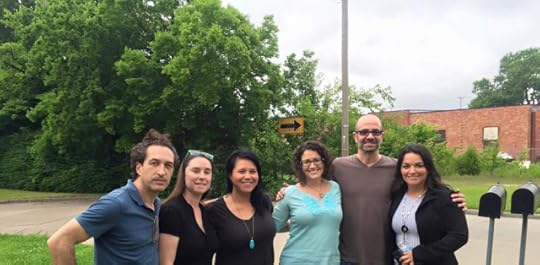
Making new friends: Juan Carlos, Leah, Adelle and I felt very lucky to make new friends in Reintegration Program staff Carrie (third from left) and Anita (right).


May 30, 2016
Reintegration and Transformation: My Visit to the Muscogee (Creek) Nation

Work last week brought me to the Muscogee (Creek) Nation, where I was lucky enough to spend three and a half days learning about a program that helps people make one of the hardest and yet most important transitions of their lives.
I (and my colleagues) were inspired by everyone we met: from the staff of the Muscogee (Creek) Reintegration Program and their clients, to those who work for agencies that partner with them and the Muscogee officials who fund them.
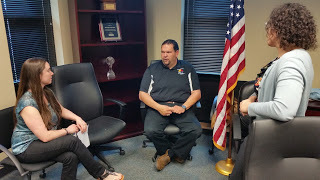
Leah, left, Tony and Adelle.
We were there to make a video for the Tribal Justice Exchange and its website Tribal Access to Justice Innovation about how the Reintegration Program helps tribal citizens returning from incarceration build new lives.
In a reflection of Muscogee values and culture--which emphasizes restoration and community healing--the program helps ex-prisoners find housing (and provides up to four months rent), find jobs, re-build relationships with families, and make fundamental changes in their lives.
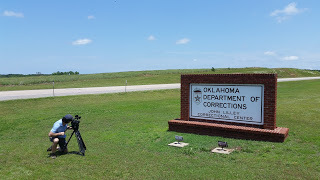
Juan Carlos outside John H. Lilley Correctional
Center in Boley, Oklahoma.
Over the course of 11 years, the program has earned the support of the community, making a persuasive case that everyone benefits when an ex-prisoner is supported rather than shunned. Reentry programs not only lower recidivism but strengthen communities, helping formerly absent parents become productive caregivers and transforming inmates who cost the state thousands to house and feed into law-abiding taxpayers.
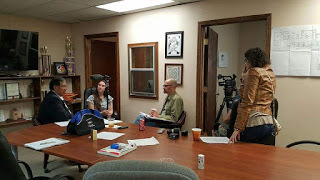
We interview Dr. Wayne Johnson,
former director of Education and Training for the
Muscogee Nation.
Not only was I impressed by the dedication of the staff, led by Program Director Tony Fish, but I was impressed by the commitment of the four former inmates we met, all of whom expressed through words and actions a strong desire to reintegrate with their communities and families.
Fish said one of the qualities necessary for the success of the Reintegration Program's clients is resilience (a characteristics that also explains the survival of Native Americans to this day, Fish pointed out.)
I saw that resilience in Tony's staff, who showed incredible commitment to their clients, and in the clients themselves. One remarkable woman, Allison, had suffered trauma and addiction but had transformed herself in prison, where she built bridges back to her family, found purpose through religion, and took classes to learn new skills. When she was released, she gathered recommendations from her teachers and others who had seen her grow and now has a job as an advocate for victims of domestic violence.
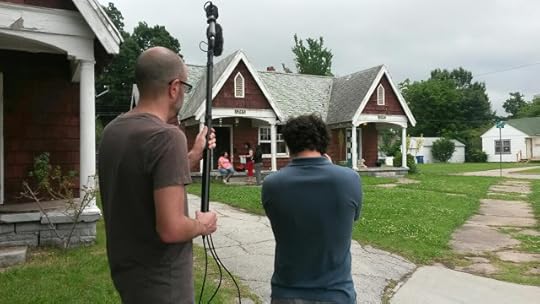
Juan Carlos films staff from the Reintegration Program speaking with a client
who had just moved into a new home. (I'm holding the boom).
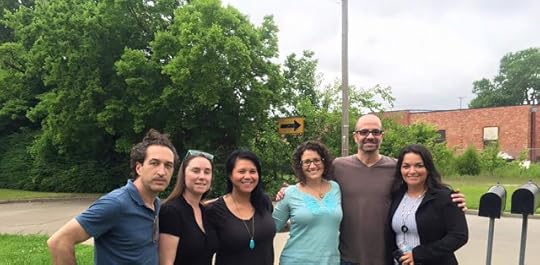
Making new friends: Juan Carlos, Leah, Adelle and I
felt very lucky to make new friends in Reintegration Program
staff Carrie (third from left) and Anita (right).
April 26, 2016
Adam Rakunas Delivers Action, Environmentalism and Union Organizing in Windswept
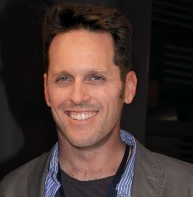
My interview with Adam Rakunas, which was posted on the New Books Network today, is my fifth with the nominees for this year's Philip K. Dick Award. His novel, Windswept , is a sprawling and funny adventure that focuses on a very stressful few days in the life of Padma Mehta, a labor organizer turned action hero on a planet far far away.
Mehta is basically part Philip Marlow, part Norma Rae, part Jessica Jones as she manages the day-to-day machinations of helping run a blue-collar planet and simultaneously battling an interstellar corporate conspiracy.
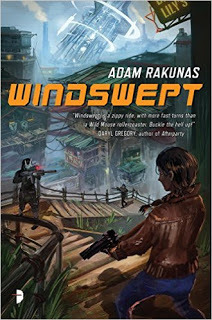 Windswept is full of action, plot twists and humor. But that doesn�t mean it shies away from grappling with important issues, including a looming environmental disaster�specifically a crop-killing plague that threatens to destroy the monoculturecrop that the entire universe depends on.
Windswept is full of action, plot twists and humor. But that doesn�t mean it shies away from grappling with important issues, including a looming environmental disaster�specifically a crop-killing plague that threatens to destroy the monoculturecrop that the entire universe depends on.Just as Mehta jumped through numerous hoops to save her world, so did Rakunas to get Windswept published. After working on the novel for several years, he sent the manuscript to 65 agents, and was rejected by 64 of them. The wisdom of the 65th to take him on was vindicated this past January, when Windswept was nominated for the Philip K. Dick Award. Although it didn�t win top honors (which went to Ramez Nam, who will be featured in the next New Books in Science Fiction podcast), Rakunas is well on his way to establishing himself as a science fiction writer with a unique voice and vision.
Windswept�s sequel, Like a Boss , will be published June 7.
April 17, 2016
A Day at Puyallup GREAT Camp
I directed and edited this video about a very cool program created and run by the Puyallup Tribe of Indians. Of course, I had a lot of help putting it together. My colleagues at the Center for Court Innovation, especially Adelle Fontanet and Leah Russell, played invaluable roles as co-producers, and the team that runs the Tribal Justice Exchange provided crucial advice and feedback.
The video features the natural wonders of the Puyallup community's tribal land as well as the talents of cinematographer Juan Carlos Borrero. Composer and musician Dawn Avery gets credit for the fantastic soundtrack. But at the heart of the video are the folks who created the amazing GREAT Camp, both staff and students. They welcomed us into their lives and moved us with their stories. For their kindness, honesty and friendship, I will be forever grateful.
April 8, 2016
Ramps are back!
I'm not sure why I love ramps so much. Taste alone doesn't explain it (although they're delicious). I think it has something to do with the fact that it's unusual to find food that's grown and harvested in the wild which is edible from the tip of its roots to the end of its leaves--and that ends up in a farmers market, so I don't have to tramp around the wilderness myself to find it.
I've seen this particular man with a table full of ramps every spring for the last several years. He's in Union Squre most Saturdays, selling potatoes and homemade potato chips, but only in April and part of May is he hawking ramps. So the seasonality of ramps is also appealing--knowing that I only have a few weeks to enjoy them.
And now that I've said all that, I want to point out that it's important to collect ramps responsibly. As soon as I posted this photo on Instagram, I searched for other photos tagged #rampseason and found this photo by besupstate, which explains that "it takes a ramp plant 5-7 years to fully mature before it drops its seeds" and urges ramp lovers to "consider cooking with the stems and greens only, leaving the bulbs in the ground. Let's forage sustainably so we don't deplete them." That led me to the ramp entry on Wikipedia, which has a section on conservation, which reads, in part:
Allium tricoccum is a protected species under Quebec legislation. A person may have ramps in his or her possession outside the plant's natural environment, or may harvest it for the purposes of personal consumption in an annual quantity not exceeding 50 bulbs or 50 plants, provided those activities do not take place in a park within the meaning of the National Parks Act.
The protected status also prohibits any commercial transactions of ramps; this prevents restaurants from serving ramps as is done in the United States.... Ramps are considered a species of "special concern" for conservation in Maine, Rhode Island, and Tennessee.
They are also considered "commercially exploited" in Tennessee. Ramp festivals may encourage harvest in unsustainable quantities.
So I hope this man, and anyone who makes a living from collecting and selling ramps, doesn't let them go the way of the dodo or passenger pigeon or any of these extinct plants. And I hope that my enjoyment of them--and my extolling them here--doesn't contribute to an unsustainable demand. I'd be happy to eat them without the bulbs, so I hope vendors start selling them that way.
March 29, 2016
Marguerite Reed's Unconventional Hero Juggles Saving Her Planet with Daycare
Of course, Vashti Loren plays many roles besides Mom. She�s also a hunter, a scientist, a tour guide and the widow of a revered early settler. But Reed spotlights her relationship with her toddler, offering a protagonist who�s not only good with a gun but manages to get her kid to daycare on time.

�So many protagonists, whether in science fiction or fantasy or adventure fiction or film are disconnected or separate or isolated from family ties, and I wanted to see if I could write something where people did have family ties, where they were connected, as we so often are in the real world,� Reed told me in her New Books interview.
When Loren discovers that a genetically-enhanced and potentially dangerous human soldier has been illegally smuggled onto the planet, she must decide whether he is friend or foe. The former means she can enlist his aid to protect her world, a lush colony faced with the threat of massive�and potentially destructive�immigration; the latter means she must kill him. Ultimately, like a number of books nominated for this year�s Philip K. Dick Award, Reed takes readers on an adventure that explores what it means to be human.
Archangel was one of six books nominated for this year�s Philip K. Dick Award. It received a special citation on March 25 at Norwescon.
The winner of this year�s award is Apex by Ramez Nam; I hope to have Nam as a guest on the podcast in the coming weeks.
March 14, 2016
PJ Manney on her book (R)evolution: 'It Doesn't Fit Neatly into Any Boxes'

PJ Manney�s fast-action novel (R)evolution (47North, 2015) has all the ingredients of a Hollywood thriller: a terrorist attack using nanotechnology, a military-industrial conspiracy, a scientist who augments his brain�plus, of course, romance, betrayal, and rapid-fire plot twists.
The movie-style storytelling comes naturally for Manney, who spent most of her career in Hollywood, developing films and writing for television. �I don�t see myself as a literary stylist or as a great wordsmith. I see myself as a � Hollywood-influenced storyteller,� she told me when we spoke on New Books in Science Fiction.
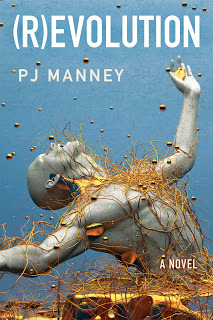
A first-time novelist, Manney says she was �flabbergasted� when she was nominated for this year�s Philip K. Dick Award. �I ended up melding genres and ignoring people�s advice,� she explains. �It doesn�t really fit neatly into any boxes and people who like boxes have a hard time with it� I thought it was just me and my editor who liked it.�
(R)evolution explores transformative technology�a brain-computer interface that relies on nano-materials to create a prosthetic hippocampus and cortex. Manney�s protagonist, Peter Bernhardt, seeks to use the technology for good�to aid brains destroyed by Alzheimer�s disease�but business and political forces try to grab the science for their own nefarious ends. Eventually, Bernhardt experiments on himself, pursuing super-human capacities to literally outsmart his enemies.
Manney had envisioned (R)evolution as a next-generation e-book: one with active Web links to provide context and background information and a soundtrack that allowed readers to hear the music that helps Bernhardt make connections and solve problems. �I wanted you to be able to play the music so you could actually experience his mental process� I wanted people to really have that sense of having a hacked and jacked brain. If you did have a quirkily wired brain to begin with and this ability to pull from endless amounts of data, what would that feel like?�
Yet while Manney�s imagination rushes headlong into the future, e-book technology moves at a slower pace. The e-book version of (R)evolution has no links or music. But Manney hasn�t given up. She is working furiously on the next installment, (ID)entity. That gives e-book designers a chance to up their game and, I hope, design an e-book format worthy of Peter Bernhardt.
(It�s not too late to sign up for a giveaway of the six books nominated for the 2016 Philip K. Dick Award. Entries will be accepted until midnight Pacific Daylight Time on March 22, 2016.)


